Audience segment is a typical technology that uses big data for precision marketing. With the
popularization of the concept of "Precision Marketing", this technology has penetrated into all
aspects of advertising, including user acquisition and monetization. The Audience Segment can be
called a "gadget" for monetization to improve eCPM and optimize user experience.
Let's learn about this practical technology together in the following article.
1. What is Audience Segment?
Audience Segment technology is based on segmentation and labeling based on audience data. To
understand this technology, let's first look at where the data comes from.
In order to track user behavior, advertising platforms generally obtain data about the audience
through the SDK or from third-party data sources. The dimensions include, but are not limited
to:
· Demographics (gender, age, geographic location, language, occupation)
· Interest
· Device brand or model
· Internet connection
· Frequency of watching ads
· In-app purchase behavior (IAP), etc.
According to different user data, the advertising platform will tag each user individually.
constituting what we often call a data management platform (DMP). It can be said that Audience
Segment is the basis for Precision Marketing
The advertising platform can make specific adjustments on the user labels for difference industries:
For example, it is often divided according to the frequency and intensity of user IAP and IAA
behaviors to distinguish frequent IAP users and Ad Whale players in the game industry.
In the field of advertising, since users react differently when they watch the same ads for many
times, the performance data of the ads change accordingly. On that basis, using advertising
frequency to divide users and monetize accordingly can be effective.
2. How to use Audience Segment
For those who have learned about User Acquisition, this set of user labeling system will be
familiar. But similarly, audience segment technology can also be applied to monetization to achieve
precise monetization and increase revenue.
After you have the user tag, should you use it separately or in combination? Let's look at the
following two methods:
PLAN A
There is no refined audience segment label in traditional waterfall, only the dimensions of the
country and the Ad Network are added to the APP and the placement. That is to say, the waterfall of
a placement in an APP can subdivide according to the bids of different countries from different Ad
Networks.

Comparing to the waterfall with Audience Segment, we found that this approach is very rough.
PLAN B
After the introduction of Audience Segment, waterfall can be divided into many linstances according
to different audiences to form a multi-dimensional audience segment model.
For different labels, the advertising platform will match the corresponding campaigns. Only in this
way can "let the right people see the right ads in the right apps", thereby greatly improving the
conversion rate and Monetization efficiency that benefiting both advertisers and developers.
3. Practical Audience Segment Method
We’ll introduce 2 effective Audience Segment methods in Ad monetization.
1) Advertising frequency
When serving many developers, AdTiming found that segmenting the Ad impression frequency of the
advertising platform and the frequency of individual users watching the ads can greatly optimize the
monetization income and user experience.
This method is effective based on the following two principles:
First, as the number of times a user watches the same advertisement increases, the interest in the
advertisement gradually decreases.
Therefore, with the increase in the frequency of the same ad impression, the eCPM given by the
advertising platform will also be reduced accordingly: the first impression is the highest, the
average eCPM from 2 to 7 times is reduced by 20-30%, and it is decreased sequentially over 8 times.
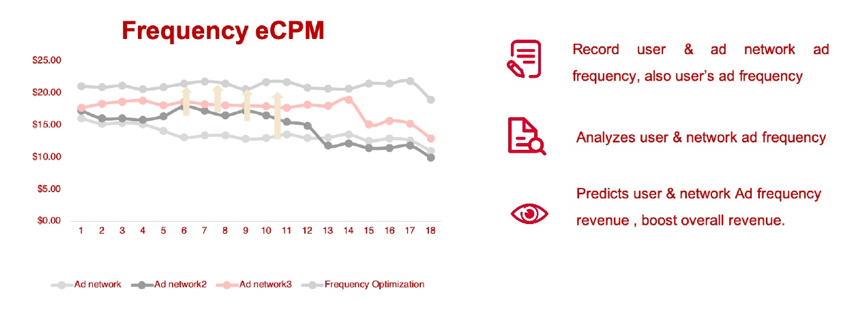
In order to avoid serious decrease in eCPM after multiple impressions, developers can introduce
multiple Ad Networks through mediation platform with great advertising sources and get the first
impression and high eCPM to maximize revenue and enrich user experience.
Secondly, as the number of times users watching ads in the same app increases, the user retention
rate and LTV will be affected to different degrees.
Take Rewarded Videos as an example, because its number of impressions does not influence the user
experience, as the number of impressions increases, the user LTV will improve and eventually reach a
stable level.
In terms of Interstitial ads, as users passively watch such ads, the increase in the number of
interstitial ad impressions will negatively affect the user experience. Therefore, as the number of
interstitial ads increases, the user's LTV will increase to a peak and then decline. For developers,
there is an optimal number of impressions for interstitial ads, which can be identified by
comprehensive data and user LTV data.

Therefore, AdTiming recommends that developers analyze the changing relationship between advertising
frequency and user retention through the mediation platform to find the optimal upper limit of
advertising frequency (Cap, which determines how many ads each user can watch per day) and
impression frequency (Pace, decide how often can you show ads to users). Developers can use the
audience segment to work well maximizing the advertising revenue while ensuring the user experience.
2) User IAA/IAP Behavior
In addition, we can roughly distinguish 4 different behavioral paths according to the behavior of
IAP (pay to play) and IAA (watch advertising). For different types of players, applying the audience
segment system can help to adopt corresponding strategies to promote revenue growth:
· New users + uncharged users, in order to provide a pure gaming experience and ensure retention, it
is not recommended to monetize.
· New users + top-up users, it is recommended to combine the proportion of later users viewing ads
and top-up to appropriately reduce monetization proportion.
· Old customers + uncharged users, it is recommended to focus on the IAA revenue, and you can use
interstitials to improve the LTV of these users
· Old users + top-up users, it is recommended to focus on IAP revenue and reduce monetization.

For players, both advertising (especially rewarded video ads) and recharge can be used to "get
stronger" in the game and get a better gaming experience. So, for developers, both of these are
effective means to promote income, and the two are not the same. They can even play a mutually
reinforcing role under appropriate circumstances.
4. How to set up Audience Segment on AdTiming Mediation Platform
As a professional mediation platform, AdTiming has taken the lead on the platform to support the
function of manually setting the audience segment, and is equipped with a large number of tags for
developers to select for testing and improve the monetization efficiency.
The operation is also very simple. You can refer to the following figure to complete the setting in
only 3 steps. You can also contact your
dedicated account manager (AM) for more information.
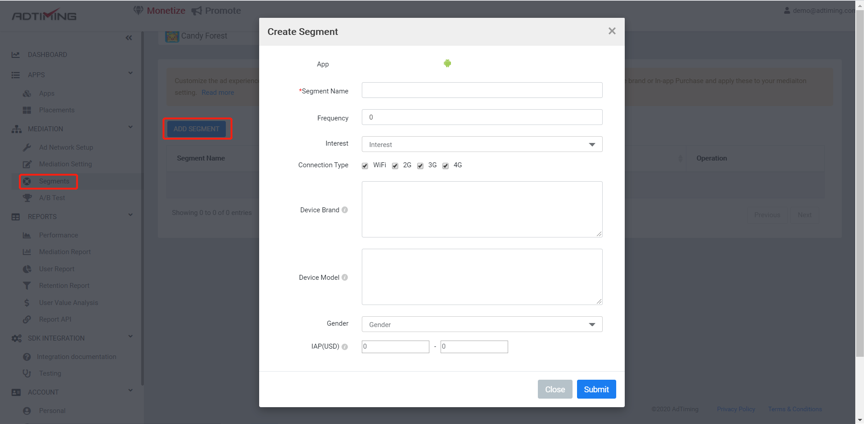
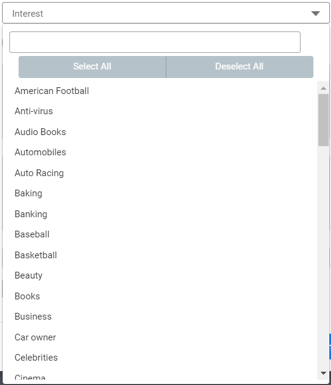
5. Automated Audience Segment optimization function
After learning about the audience segment, I believe that some developers will be eager to try. So
the next question is coming, how many segments should be set up?
First of all, when the impression magnitude is insufficient, various platforms are not clear about
the characteristics of the traffic, so eCPM will fluctuate greatly and cause instability in revenue.
Therefore, AdTiming recommends that developers set an instance every 3-5 million impressions.
After getting the command of this basic principle, let's look at how to set up the most basic
settings when operating waterfall for a placement of an app. How many instances do you need to set?
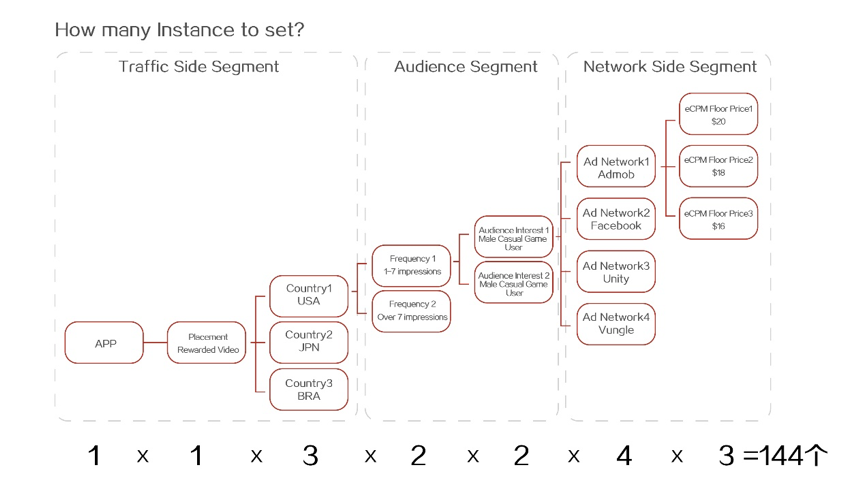
Headache? With so many instances, wouldn't it take a lot of time and effort to manually set and
optimize?
In order to solve this problem, AdTiming introduced the Audience Segment Automation feature, which
analyzes audience and traffic characteristics through the platform's algorithm capabilities, and
automatically establishes and optimizes audience segment.
When you manage other Ad Networks through the AdTiming mediation platform, you can turn on the
function of automated audience segment in the AdTiming background to easily achieve revenue
upgrades.
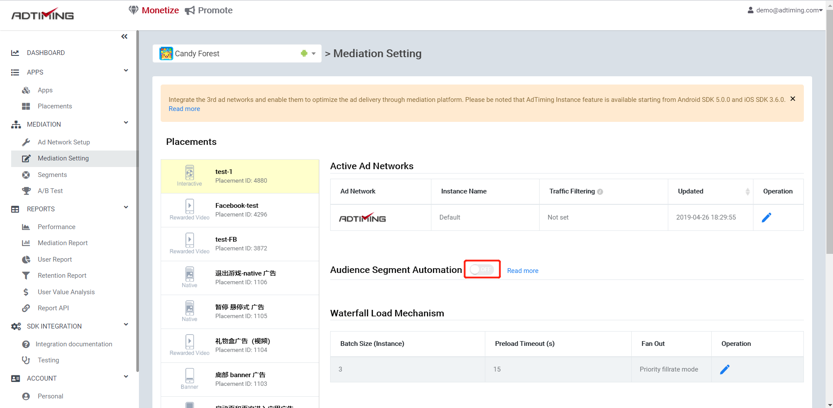
6. Case Study
Miniclip is the Top 10 gaming company in the world, with more than 10 million users worldwide.

After using the AdTiming monetization platform, a corresponding audience segment strategy was made
based on the characteristics of the user. After the verification was effective, it continued to be
optimized through the automated audience segment. Within 3 months, Miniclip achieved a nearly
30%
increase in traffic eCPM through AdTiming.

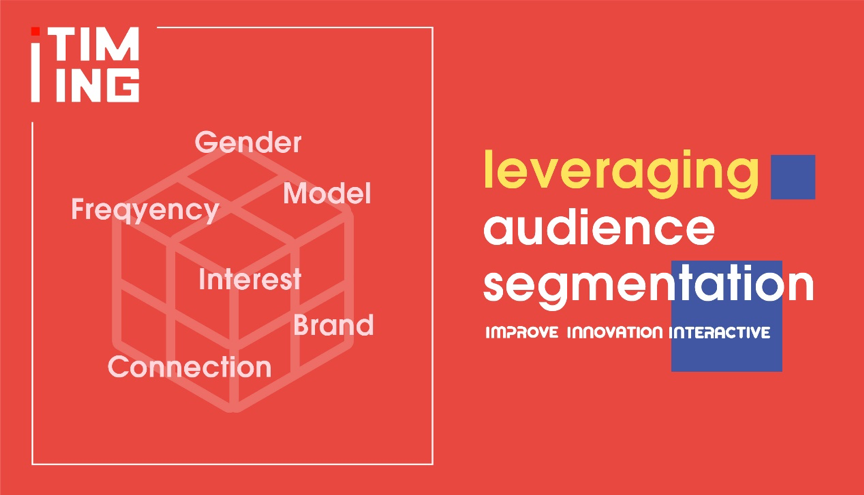
 Comparing to the waterfall with Audience Segment, we found that this approach is very rough.
Comparing to the waterfall with Audience Segment, we found that this approach is very rough.
 In order to avoid serious decrease in eCPM after multiple impressions, developers can introduce
multiple Ad Networks through mediation platform with great advertising sources and get the first
impression and high eCPM to maximize revenue and enrich user experience.
In order to avoid serious decrease in eCPM after multiple impressions, developers can introduce
multiple Ad Networks through mediation platform with great advertising sources and get the first
impression and high eCPM to maximize revenue and enrich user experience.
 Therefore, AdTiming recommends that developers analyze the changing relationship between advertising
frequency and user retention through the mediation platform to find the optimal upper limit of
advertising frequency (Cap, which determines how many ads each user can watch per day) and
impression frequency (Pace, decide how often can you show ads to users). Developers can use the
audience segment to work well maximizing the advertising revenue while ensuring the user experience.
Therefore, AdTiming recommends that developers analyze the changing relationship between advertising
frequency and user retention through the mediation platform to find the optimal upper limit of
advertising frequency (Cap, which determines how many ads each user can watch per day) and
impression frequency (Pace, decide how often can you show ads to users). Developers can use the
audience segment to work well maximizing the advertising revenue while ensuring the user experience.
 For players, both advertising (especially rewarded video ads) and recharge can be used to "get
stronger" in the game and get a better gaming experience. So, for developers, both of these are
effective means to promote income, and the two are not the same. They can even play a mutually
reinforcing role under appropriate circumstances.
For players, both advertising (especially rewarded video ads) and recharge can be used to "get
stronger" in the game and get a better gaming experience. So, for developers, both of these are
effective means to promote income, and the two are not the same. They can even play a mutually
reinforcing role under appropriate circumstances.

 Headache? With so many instances, wouldn't it take a lot of time and effort to manually set and
optimize?
Headache? With so many instances, wouldn't it take a lot of time and effort to manually set and
optimize?

 After using the AdTiming monetization platform, a corresponding audience segment strategy was made
based on the characteristics of the user. After the verification was effective, it continued to be
optimized through the automated audience segment. Within 3 months, Miniclip achieved a nearly 30%
increase in traffic eCPM through AdTiming.
After using the AdTiming monetization platform, a corresponding audience segment strategy was made
based on the characteristics of the user. After the verification was effective, it continued to be
optimized through the automated audience segment. Within 3 months, Miniclip achieved a nearly 30%
increase in traffic eCPM through AdTiming.
